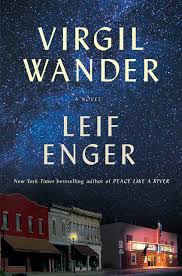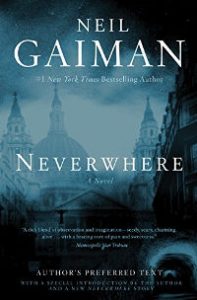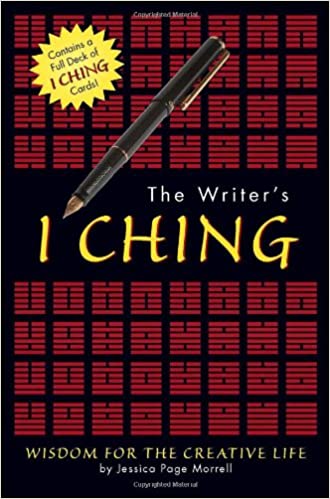 A bit cooler today I’m happy to report, but more blistering temperatures on the way.
A bit cooler today I’m happy to report, but more blistering temperatures on the way.
Awhile ago I posted this example of introducing an unforgettable secondary character from the great Leif Enger’s novel Virgil Wander.
You can find my column here in case you missed it. I’m going to talk about it during my virtual workshop Captivating Co-stars: Why Secondary Characters Need More Love for the Chanticleer Author’s Conference on Tuesday, September 8th. Expect lots more examples and techniques for fleshing out your story cast.
Here are a few tips I’ve been thinking about as I finish my presentation and handouts for this workshop.
Introduce your secondary characters one by one. Readers need a sense or understanding of their importance to the protagonist and story as soon as possible. This is especially important in your opening scenes and why it’s important to really, really think long and hard before you create a crowd scene in your first pages.
It can be helpful to imagine your reader as someone who has stumbled into your scene blindfolded and flummoxed. How will he/she get his/her bearings? Understand who is who? Tell the players apart? Understand where the whole shebang is taking place?
Create at least a few distinguishing, interesting qualities for your co-stars. Flouncy chiffon dress with red Keds. Flawless skin. Blue and purple hair. Beer gut. Nose like a hawk’s. Stooped posture. Yellow teeth. Rancid breath. Six foot seven. Four foot eleven. Scarring acne.
 Here’s an example from Neil Gaiman’s Neverwhere:
Here’s an example from Neil Gaiman’s Neverwhere:
Late, the protagonist Richard Mayhew is hurrying to a restaurant for an important dinner with his fiance’ when this happens:
She continued to drag him along, as a door ahead opened in the wall, an little way ahead of them, and someone stepped out and stood swaying for long long terrible moment, and then collapsed to the concrete. Richard shivered and stopped in his tracks. Jessica tagged him into motion.
(Jessica keeps talking, warning him how to act around her boss, their dinner guest) They had reached the person on the sidewalk. Jessica stepped over the crumpled form. Richard hesitated. “Jessica?”
“You’re right. He might think I’m bored,” she mused. “I know,” she said brightly, “If he makes a joke I’ll rub my earlobe.”
“Jessica?” He could not believe she was simply ignoring the figure at their feet.
“What?” She was not pleased to be jerked out of her reverie.
“Look.”
He pointed to the sidewalk. The person was facedown, and enveloped in bulky clothes; Jessica took his arm and tugged him toward her. “Oh. I see. If you pay any attention, Richard, they’ll walk all over you. They all have homes, really. Once she’s slept it off she’ll be fine.” She? It was a girl. Jessica continued, “Now I’ve told Mister Stockton that we–” Richard was down on one knee. “Richard! What are you doing?”
“She isn’t drunk,”said Richard. ” She’s hurt. He looked at his fingertips. “She’s bleeding.” The scene continues with Jessica insisting they ignore her.
The girl’s face was crusted with dirt, and her clothes were wet with blood. ….
Suddenly, the girl’s eyes popped open, white and wide in a face that was a little more than a smudge of dust and blood. “Not a hospital, please. Take me somewhere safe. Please.” Her voice was weak.
As the scene continues Richard picks up the girl and as he plans to carry her back to his place Jessica threatens to end their engagement.
Richard felt the sticky warmth of her blood, soaking into his shirt. Sometimes, he realized, there is nothing you can do. He walked away.
I’m so glad he walked away aren’t you? Technique to steal: Use secondary characters to reveal, expose the main character’s values, beliefs, traits.
He carries her home,stops up the bleeding, and she falls asleep in his bed. Dazed, he lands on his couch, wondering what has just happened. He eventually falls into a nightmare and sat up, gasping for breath. The girl is there and asks, “Bad dream?
After a transition paragraph Gaiman continues describing the girl: The homeless girl didn’t say anything. She looked bad: pale, beneath the grime and brown-dried blood, and and small. She was dressed in a variety of clothes thrown over each other: odd clothes, dirty velvets, muddy lace, rips and holes and through which other layers and styles could be seen. She looked, Richard thought, as if she’d done a midnight raid on the History of Fashion section of Victoria and Albert Museum, and was still wearing everything she’d taken. Her short hair was filthy, but looked like it might have been a dark, reddish color under the dirt.
Technique: Keep building on the reader’s first impressions, keep developing the character’s appearance and traits. Give readers enough details, but also allow them also to fill in the rest with their imaginations.
 Reminder: on Saturday, September 12 I’m teaching Secrets of the Dark Arts, an in-depth workshop chocked full of the techniques I use to edit my clients’ manuscripts. I’ve got a lot of examples and tips that I know you’ll find helpful including the 3 major stages of editing. You can still enroll and find more information here at Write Now! Conference sponsored by Desert Sleuths, Sisters in Crime of Phoenix.
Reminder: on Saturday, September 12 I’m teaching Secrets of the Dark Arts, an in-depth workshop chocked full of the techniques I use to edit my clients’ manuscripts. I’ve got a lot of examples and tips that I know you’ll find helpful including the 3 major stages of editing. You can still enroll and find more information here at Write Now! Conference sponsored by Desert Sleuths, Sisters in Crime of Phoenix.
Please stay safe this Labor Day weekend. Outdoors. Masked. Distanced–however you do it, remember there have been COVID spikes in this country after holidays.





Leave a Reply